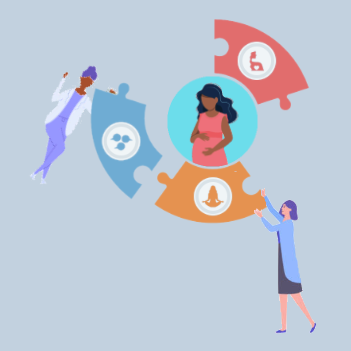What is Inclusive Care™: Addressing Gaps (2/3)
[← Read Part 1. What is Inclusive Care: Holistic Information]
Our life-experiences are typically an immersive set of conditions that create a particular memory. It’s usually not just that you were at the restaurant, OR with your best friend, OR that the music was playing, OR that you had great food, but rather a combination of things that lead to something that shapes you.
Why should our health be any different? It’s not, actually, but we pretend that it is. Doctors only have access to a small fraction of information that affects your health. They are adept at looking at your clinical records and making decisions from them. Sometimes they may have genetic information and family history, but they rarely do (gap #1). Doctors may ask you about certain behavioral details, like whether you smoke or not but there’s much more beyond their purview that isn’t accounted for (gap #2). Doctors almost never know about environmental exposures in your home, like water or air quality, or about socioeconomic conditions that may affect your outcomes, like living in medical deserts, not having adequate nutrition, or lacking reliable transportation to the clinic (gaps #3, #4…). And, yet, we expect doctors to play the part of our external observer in making life-decisions based on an incomplete 2-dimensional picture, and no tools to help them fill those gaps. What could go wrong?
So what is Inclusive Care™? Well, just like our scenarios above, we're all "immersed" in a world of nature and nurture. Our socioeconomic and environmental factors can affect our health outcomes as much, or more, than our clinical factors. Some studies have shown that your zip code might be a better predictor of your health than your genetic code(1). We're constantly seeing articles about toxins in our water(2), unhealthy air(3), health social disparities(4), and the effects of racism(5) on health outcomes. The list goes on.
What these articles point out is that there are many health factors beyond Clinical that influence our health. What they all miss is that none of them exist in silos. We're in a constant flux, interacting with each determinant directly, or through a combination of interrelated factors, that apply hidden forces that sometimes play disproportionate roles on our health. That's when you hear things like "how did that happen?!" or "one of those fluke events" that people dismiss as randomness or luck of the draw. Inclusive Care™ treats those “flukes” as gaps, and our solution is to include all determinants in how we view the complete picture of a person. Inclusive Care™ also includes advanced statistical "models" (hence Modelo Health, by the way) that look for patterns and start making sense of this complex data. Inclusive Care™ includes the patient in the course of care and decision-making, increasing health literacy and enriching the patient-clinician dynamic. It includes the clinical team in alerting them to risks that they may not even be aware of. It includes the village around the mother to play whatever role they may be capable of in shielding and protecting her. And Inclusive Care™ includes all people in an elevated vision of care that's available to everyone, everywhere. All of these inclusions roll up into what we call Inclusive Care™.
Continue reading Part 3 of this series.
1) The Harvard Gazette. Zip code or genetic code?
2) Newsweek. 170 Million Americans Have Cancer-Causing, Radioactive Elements in Their Drinking Water.
3) Forbes. More Than 137 Million Americans Exposed To Unhealthy Air Pollution Levels, Study Finds.
4) Healthcare Finance. Using zip codes to find at-risk patients to determine the social determinants of health.
5) CNN. Widower of Black woman who died hours after childbirth files civil rights lawsuit against Cedars-Sinai.
View additional content in the Modelo Health app


